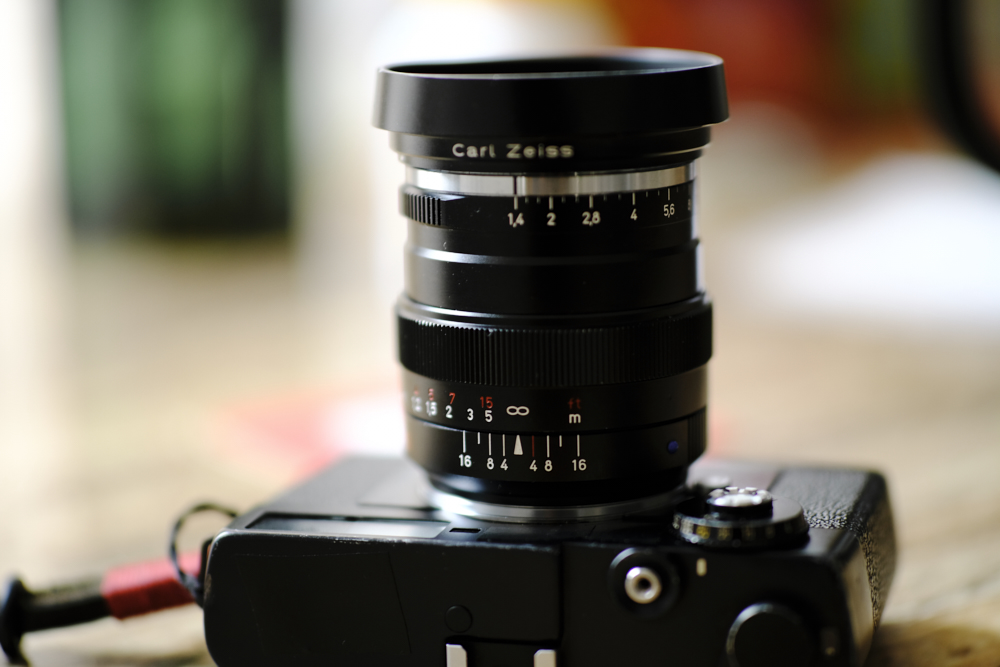Manual Camera Lenses for Nikon
Manual camera lenses for Nikon come in a variety of different focal lengths and types like the standard 50mm or the wide-angle lenses. These lenses have a manual focus as opposed to an automatic focus and are compatible with a range of different mount types. You need to clean your manual lenses regularly in order to keep it functioning effectively.
What kinds of mounts are compatible with these lenses?They use the same lens mounts, and often, the same lenses as their film-based predecessors. However, the history of the development of autofocus film cameras shows that only two camera companies have preserved their lens mounts from the days of manual focus film cameras to today’s digital SLRs. These are Pentax and Nikon. The older manual focus lenses lack these electronic contacts and processors, and have very limited information exchange with the camera body. These are called “non-CPU” lenses. One piece of information that is required for the camera to provide exposure metering is the aperture value set on the lens. This is reported automatically to the. In the field of photography, a manual focus camera is one in which the user has to adjust the focus of the lens by hand. Before the advent of autofocus, all cameras had manually adjusted focusing; thus, the term is a retronym.
A variety of different mounts are compatible with Nikon lenses, including the Canon EF, Canon EF-S, Canon EOS, M42, Micro Four Thirds, and the Sony E-Mount. Mounts hold the camera and lens steady while you shoot to minimize movement that might skew a shot. The type of mounts you use for your manual focus lenses is up to your personal needs.
What sorts of focal lengths and lens types are available?This brand of manual lenses is available in both fixed and zoom lenses. Fixed lenses do not enlarge images, although they can be moved closer to or further from an object to capture different details. Zoom lenses can enlarge an image and focus accordingly to capture different levels of details. Focal lengths vary widely. Available lengths include options 20, 24, 24-70, 28, 35, 50, 85, and 300 millimeters. These lenses are coined as zoom lenses, macro lenses, wide-angle lenses, telephoto lenses, AI lenses, and so on. Longer or shorter lenses allow for a narrow or wider shot. Some lenses screw directly onto the camera body.
What are the available aperture ratings?Manual Focus Lens Canon
- Aperture ratings vary widely. Aperture is the amount of light that comes through the lens through a special opening to provide a certain amount of exposure.
- More light means more exposure, and less light means less exposure.
- The types of ratings include f-1.2, f-1.4, f-1.8, f-2, f-2.8, f-3.5, f-4, and f-8. Lower f-stops mean more light comes in, and larger ratings mean less light comes into the lens.
This brand of manual lenses are made from different kinds of plastic and glass. Glass makes up most of the actual lens, while plastic encases it. Dials and adjustments on the exterior are also made from plastic. To care for both materials appropriately, start by wiping down the outside of the lens with a soft cloth to remove dirt and debris. Make sure that all the dust is removed from the glass portion as well, either by using a very soft bristle brush or compressed air to avoid scratching the surface. Once the lens is clear, apply lens cleaner to a soft cloth. Starting at the center of the lens, use circular strokes to work your way toward the edges. Taking time to clean the lens regularly can help to maintain its efficiency when shooting photos.
Content provided for informational purposes only. eBay is not affiliated with or endorsed by Nikon.In the field of photography, a manual focuscamera is one in which the user has to adjust the focus of the lens by hand. Before the advent of autofocus, all cameras had manually adjusted focusing; thus, the term is a retronym.

Manual Focus Lens For Sony Fe

The focus itself may be adjusted in a variety of ways. Larger view cameras and the like slide the lens closer or further from the film plane on rails; on smaller cameras, a focus ring on the lens is often rotated to move the lens elements by means of a helical screw. Other systems include levers on the lens or on the camera body.
There are a number of ways in which focus may be determined. Simplest is using a distance scale and measuring or estimating distance to the subject. Other methods include the rangefinder, which uses triangulation to determine the distance. On other cameras, the photographer examines the focus directly by means of a focusing screen. On the view camera, this ground glass is placed where the film will ultimately go, and is replaced by a sheet of film once focus is correct. Twin lens reflex cameras use two lenses that are mechanically linked, one for focusing and the other to take the photograph. Single lens reflex cameras, meanwhile, use the same objective lens for both purposes, with a mirror to direct the light to either the focusing screen or the film.
Manual Focus Lens Review
Focusing screens, in their simplest form, consist of a matte glass or plastic surface on which the image can be focused. Other devices, such as split-image prisms or microprisms, can help determine focus.
Manual Focus Lens Ebay
Manual focus lenses can also be used on modern digital cameras with an adapter. Zeiss, Leica and Cosina Voigtländer are among current manufacturers who continue to make manual lenses in lens mounts native to modern cameras.
Comments are closed.